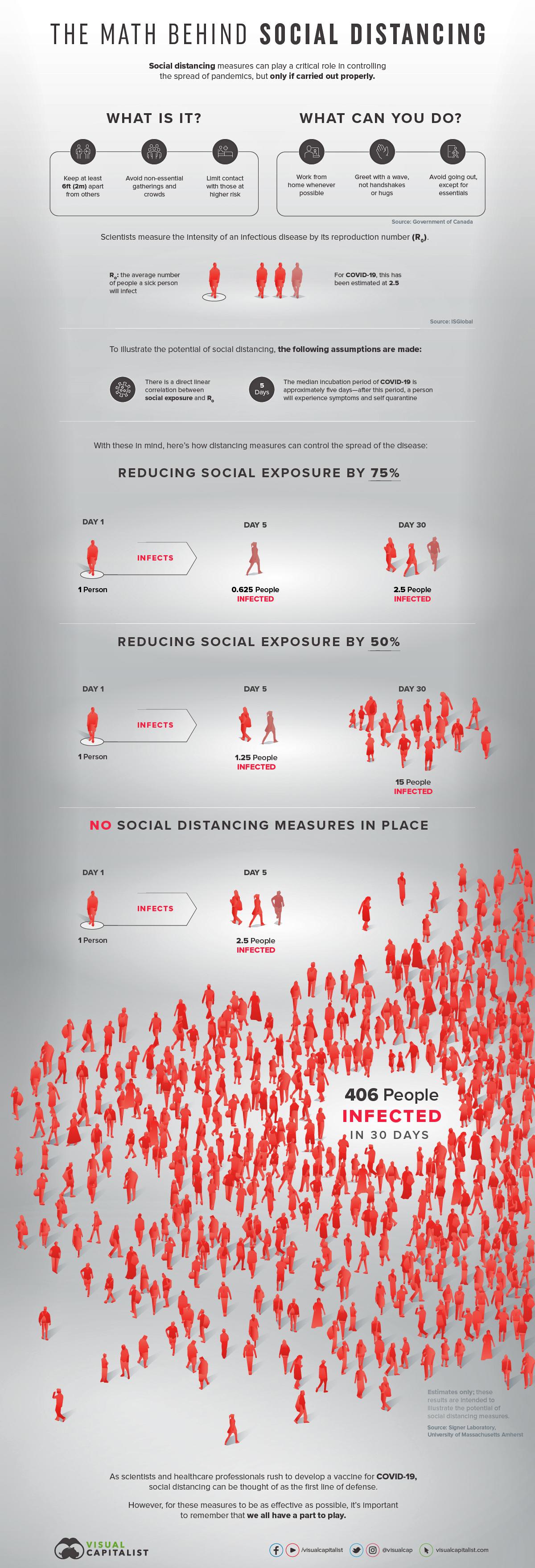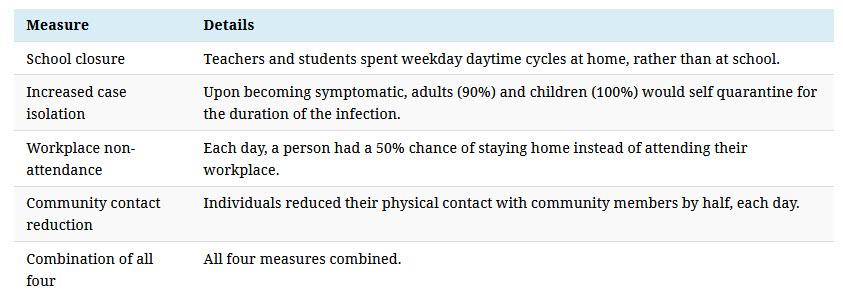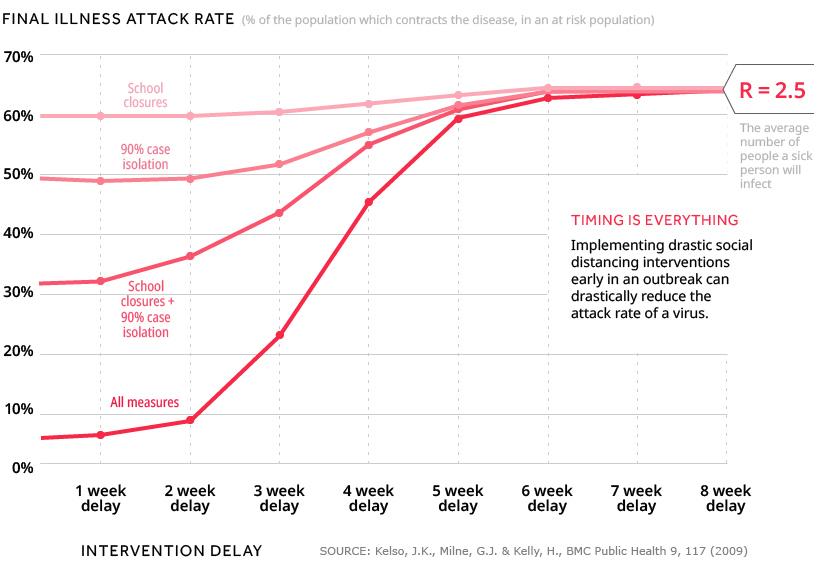The Math Behind Social Distancing
As we wait for scientists and healthcare professionals to develop a vaccine for COVID-19, there is another, more readily available tool at our disposal.
Social distancing, defined as measures taken to reduce physical contact, is the first line of defense for containing an infectious disease like COVID-19. That’s because these infections spread when people cough, sneeze, or touch surfaces on which the virus resides.
To help us grasp the impact these measures can actually have, Visual Capitalists’ Marcus Lu illustrates how a reduction in social exposure can theoretically contain the spread of infection in the following infographic.
Theoretical Potential
The calculations used to create today’s infographic come from Signer Laboratory, a stem cell research lab located in the Moores Cancer Center at the University of California San Diego.
Using a summation formula makes it possible to estimate the number of new infections over a 30 day period, across three scenarios.
To arrive at the figures reported above, Robert A.J. Signer, Ph.D., and his team made a number of key assumptions.
First, they estimated the basic reproduction number (R0) of COVID-19 to be 2.5, a figure supported by recent research. This means that, on average, an infected individual will spread the disease to 2.5 other people.
Next, they assumed that an infected individual will unknowingly spread COVID-19 over the median five day incubation period. After this period, the individual will begin to develop symptoms, immediately self quarantine, and no longer pose a threat.
Finally, they assumed a direct linear correlation between social interactions and R0. This means that when an infected person reduces their physical contact with others by 50%, they also spread the disease by an amount 50% less.
Timing is Everything
While the figures above are the results of mathematical estimations, researchers have actually studied social distancing from a variety of angles.
One study used simulations to determine the magnitude and timing of social distancing measures required to prevent a pandemic. The distancing measures simulated were:
The results, for a community of 30,000 people and an epidemic with R=2.5, are charted below. We can define the final illness attack rate as the share of people from an at risk population who ultimately catch the disease.
Results showed that when no action was taken, 65% of the population contracted the disease. However, if a combination of all four distancing measures were implemented instead, the attack rates were:
-
45% (distancing begins after a 4 week delay)
-
21% (distancing begins after a 3 week delay)
-
7% (distancing begins after a 2 week delay)
What’s clear is that social distancing was significantly more effective when implemented with minimal delay—the final illness attack rate rose quickest beyond the third week. These findings draw a parallel to the visualizations in today’s infographic, which showed us just how quickly a disease can spread.
Social distancing interventions are important as they represent the only … measure guaranteed to be available against a novel strain of influenza in the early phases of a pandemic.
– Kelso, J.K., Milne, G.J. & Kelly, H., BMC Public Health 9, 117 (2009)
We arrive at a similar conclusion when it comes to the types of distancing measures implemented. In the simulations, none of the four measures taken on their own were able to have a similar effect as when they were combined.
With the global number of COVID-19 cases still rising, many governments have issued quarantine orders and travel bans.
The math supports these decisions—reducing our physical contact with others, even when we aren’t experiencing any symptoms, is crucial. Studies like the one summarized above also prove that taking action sooner, rather than later, can go a long way in reducing the spread of infection.
The key takeaway from all of this? Social distancing is a powerful disease control tool, but only if we all participate.
Tyler Durden
Mon, 03/30/2020 – 21:45
via ZeroHedge News https://ift.tt/2Ux3XQq Tyler Durden



